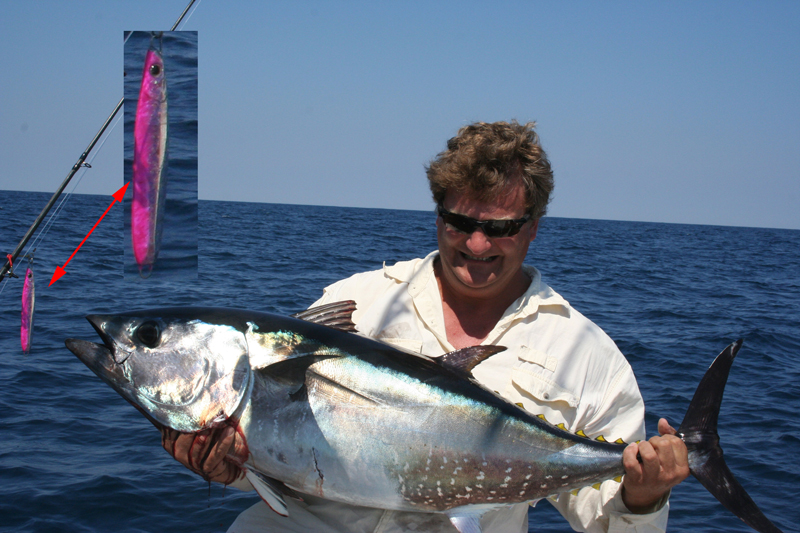As fall sets in and the waters cool off, jigging for yellowfin tuna and/or bluefin tuna can be red hot. There’s a lot to this game, but to nutshell the tactical parameters:

- Stick with speed-jig style offerings, but don’t be tempted to use monster jigs just because you’re fishing for tunas; elephants eat peanuts, and a four- or five-inch jig of three to five ounces is more than enough of an offering.
- Rig up conventional or spinning jigging gear with 50- to 65-pound braid mainline and a 50- to 80-pound fluorocarbon leader.
- Locate fish with the meter. Often you’ll want to troll until finding an active area, then move slowly while scoping out the meter. When you spot those big beautiful marks, drop down your jigs well beyond the depth you see them at. Search hard in areas where you spot shoals of sand eels on the meter.
- Don’t drop the jig then swing the rod up and down with your arms, but use a reel-and-pump motion. Don’t stop reeling, because the idea is to draw the tuna into attacking as the jig “flees” towards the surface. Keep the rod tip between seven and nine o’clock and crank/pump hard enough for the tip of the rod to load (bend) and unload (straighten up), imparting the jig with a darting motion as it zooms up through the water column.
Since you’re always reeling and pumping there’s always full tension on the line — no matter when the fish hits you’re ready for it, and the strike should provide a de facto hook-set.